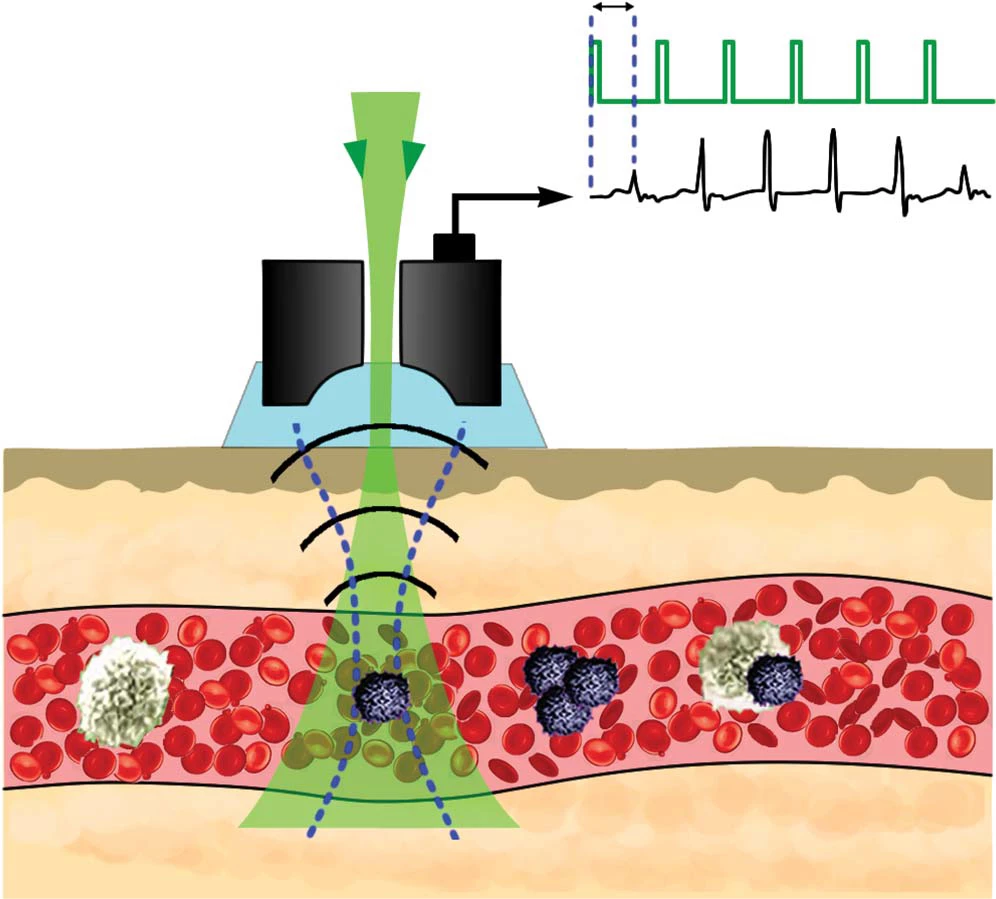A team from the University of Arkansas for Medical Sciences (UAMS) has developed a non-invasive tool which not only detects circulating tumor cells (CTCs) in the bloodstream, but can blast them away at the same time. Dubbed the Cytophone, it employs a laser which heats the CTCs, subsequently detecting them via ultrasound before turning up the heat again to kill them.
CTCs are the means by which metastasis (secondary malignant growths) occurs, so detecting and responding to them quickly is key to halting – or at least inhibiting – the spread of cancer. This isn't the first time lasers have been used by researchers to detect cancer, nor to attack it, but this – according to the the team – is the first demonstration of a non-invasive method of detecting CTCs directly in the bloodstream of melanoma patients.
But the Cytophone is more than just a detection device, it can blast these cells as well. In the detection phase, the laser penetrates the blood vessel, heating the dark melanin nanoparticles in the CTCs. Because they heat more quickly than surrounding particles, the rapid thermal expansion of these nanoparticles generates a unique sound which is detected via an ultrasound transducer on the skin surface. To destroy the CTCs, the laser further heats them, creating nano bubbles which eventually destroy the tumor cell. This hunter/killer capability means that the Cytophone has the potential to act as a dual therapeutic and diagnostic (theranostic) tool.

Led by Dr Vladimir Zharov, the team found that its device was a thousand times more sensitive than other methods when it came to detecting CTCs in the blood of melanoma patients. Even when a tumor was unable to be detected on the skin – due to size or after surgical removal – the Cytophone was able to detect CTCs that traditional methods might easily miss.
"The only methods that are available to detect CTCs are mainly based on drawing blood from the patient," says Zharov. "An average blood sample taken from a patient consists of only a few milliliters, which may or may not contain any CTCs. In contrast, the Cytophone can monitor a person's entire five-liter blood supply, potentially locating every CTC in it. No needle is used, and no blood is removed."
While the initial study was conducted on patients with melanoma, the Cytophone has potential applications for other cancer cells that have no pigment. The research showed the device had the ability to detect non-pigmented CTCs by first injecting patients with magnetic and gold nanoparticles with a unique biological coating which would help tag the CTCs. The Cytophone can also spot cancer-related blood clots, the second leading cause of death in cancer patients according to the researchers.
However, the potential applications for the Cytophone aren't just cancer-related. It could also be adapted to detect sickle cells (to prevent sickle cell crisis) or used to aid in the selection of the most effective of a range of drugs by monitoring any disease-associated markers in the blood and noting which ones decreased the most.
The team at UAMS isn't resting just yet, and is currently developing a simpler, portable, wearable Cytophone – using advanced, smaller lasers – to be distributed to cancer clinics across the USA and used in a wider clinical trial with even more melanoma patients. It remains to be seen if the Cytophone is to become a stand-alone treatment, or used in combination with conventional treatment methods.
The research is described in a paper published this week in the journal Science Translational Medicine.





